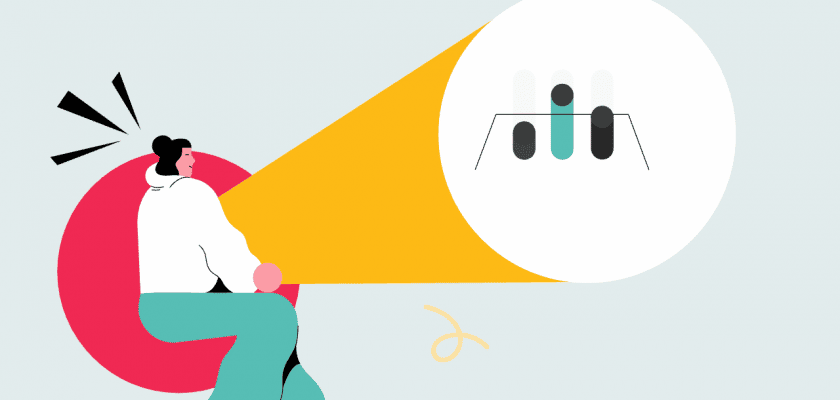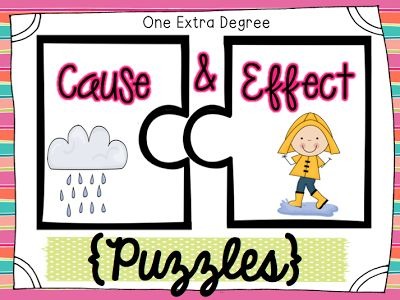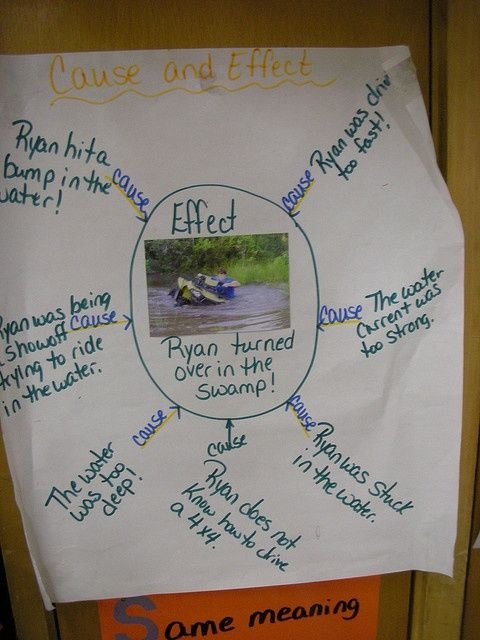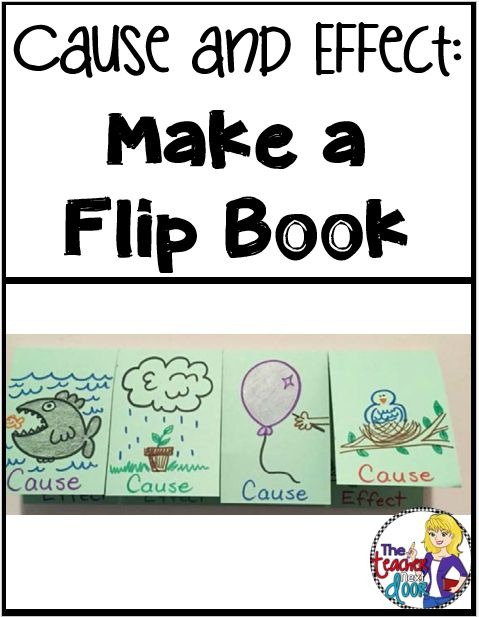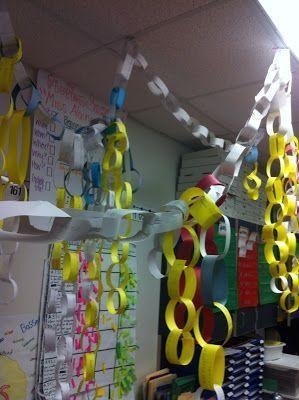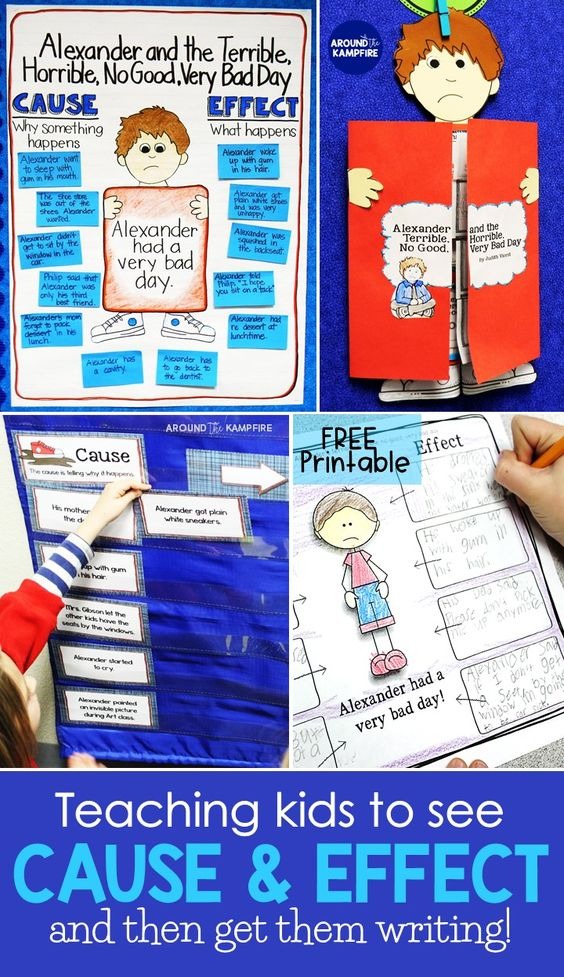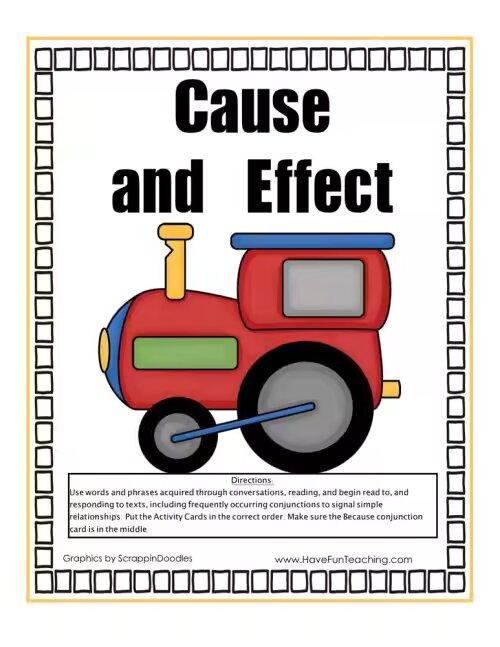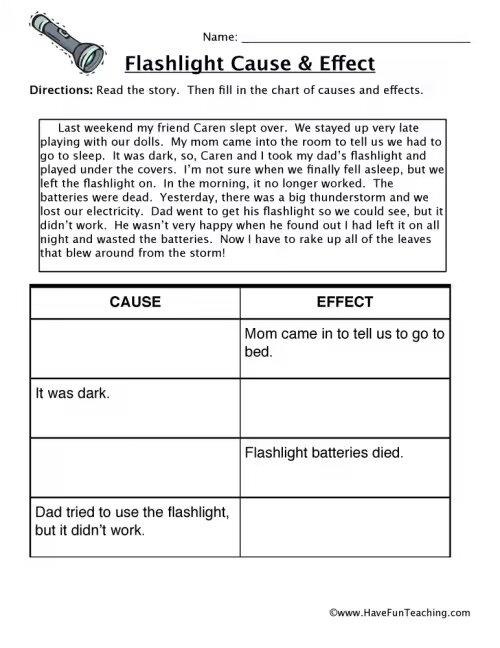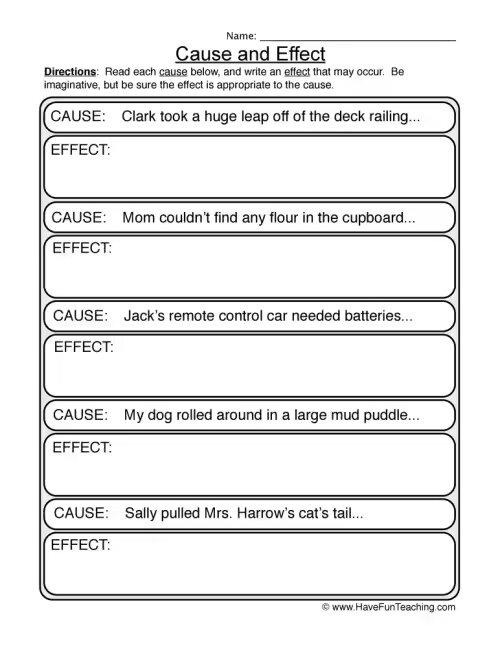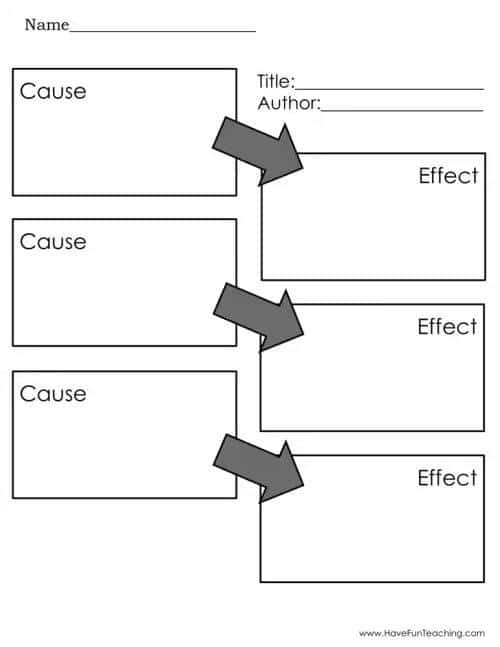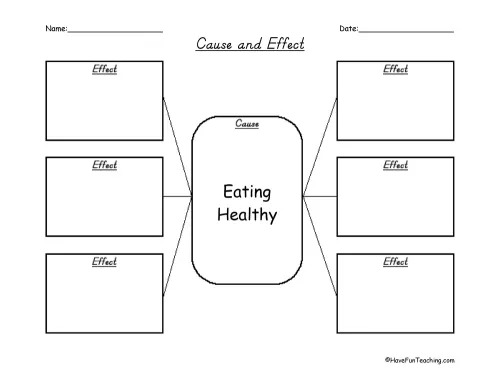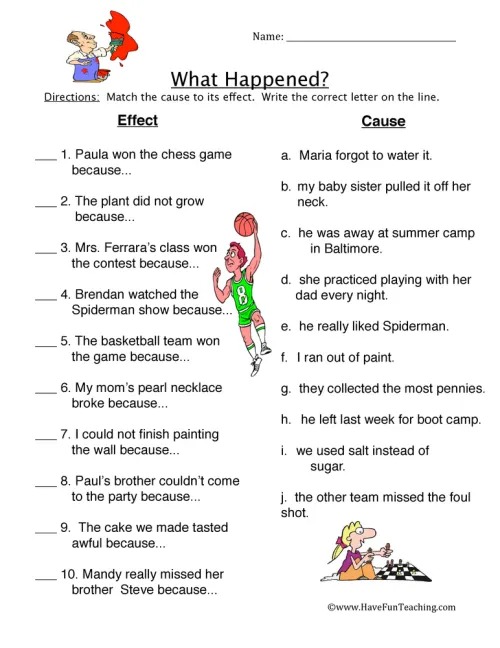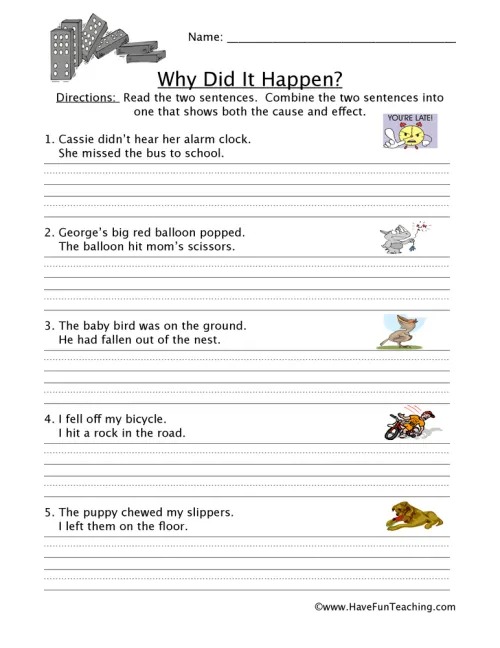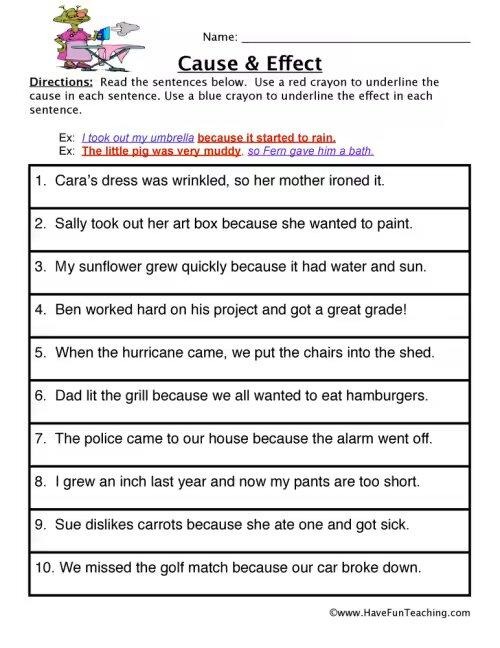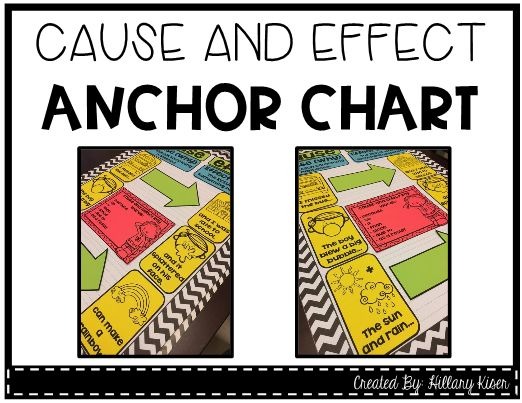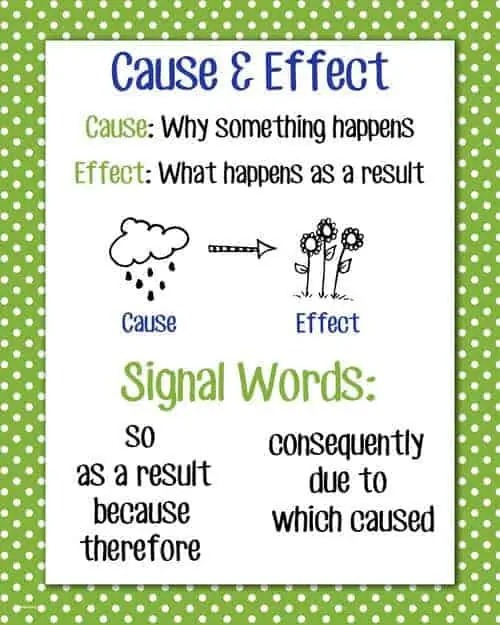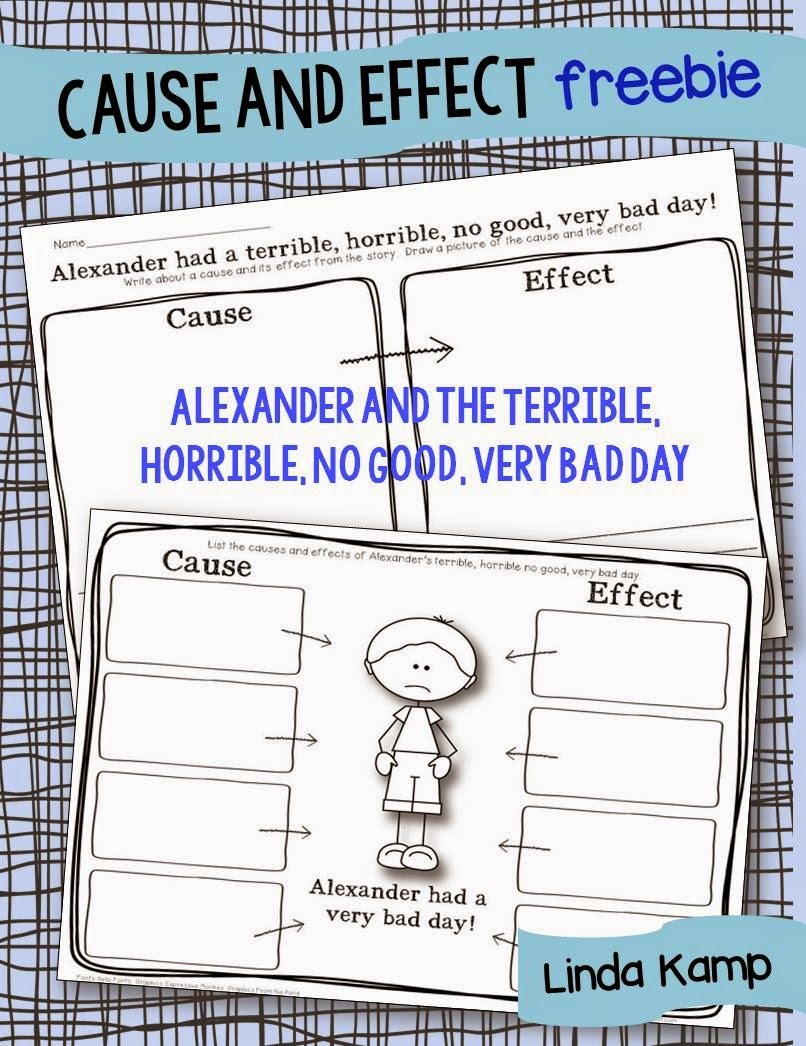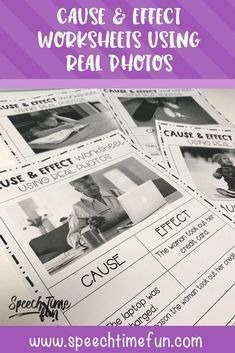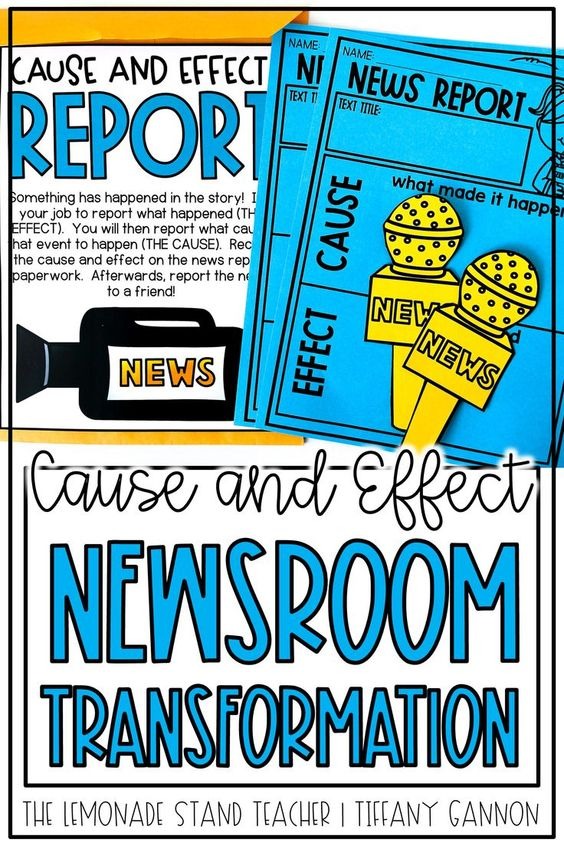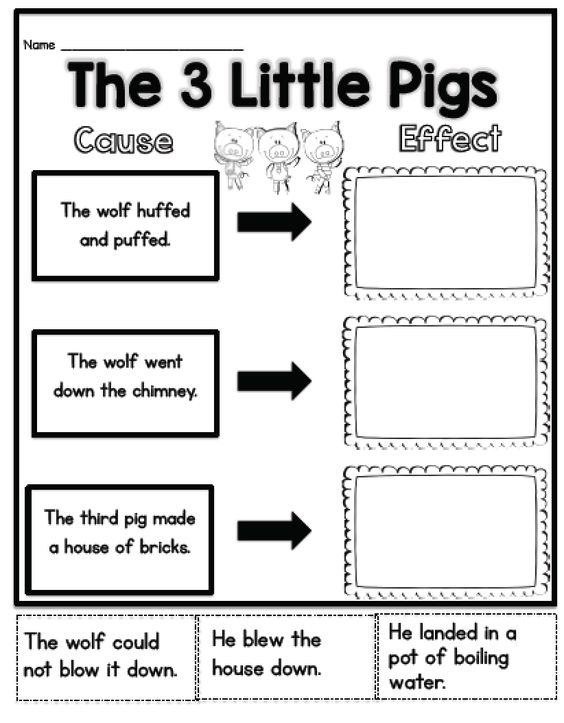Do you ever find yourself explaining the same concepts over and over again to your students? Maybe it’s because you don’t have the right tools. There are many ways to get kids to listen and understand what you are trying to say regarding a specific topic. And one of the best ways is using visual tools like an anchor chart.
An anchor chart is a visual presentation of information designed to help students understand a specific topic. Teachers often create their own anchor charts or purchase them pre-made. However, designing an anchor chart can become a classroom activity, and students can participate in its creation, making it easier to understand and more likely for them to consult it.
‘Cause and effect’ is one of the most basic flow charts we teach our kids. But even then, many kids can’t grasp this concept. So if you ever find yourself in this situation, do not fret! You are not alone.
Cause and effect is a crucial part of critical thinking. Younger children often assume that one event will have only one effect. It is so much more complicated than that, and what seems like a straightforward concept is often overlooked.
A cause-and-effect anchor chart will not only help your students develop life skills, but it can also help them get a better grasp of a text, whether it is fictional or nonfiction. In addition, an anchor chart will allow you to explain the concept to students and then help them build upon that understanding to enhance reading comprehension.
Table of Contents
- Elements of a Good Cause And Effect Anchor Chart
- Different Ways of Presenting a Cause and Effect Anchor Chart
- Cause and Effect Anchors and Resources from Teach Simple
- Simple Cause and Effect Review Worksheets
- Other Resources
- Cause And Effect From Literacy Ideas
- Summing up
Elements of a Good Cause And Effect Anchor Chart
A good cause and effect anchor chart will be clear, concise, and easy to understand. It should also have uncomplicated examples that clarify the concept. Here are some tips on creating an effective anchor chart to teach cause and effect.
Start Simply
Make a simple chart to introduce cause-and-effect. Ensure you provide clear definitions for the terms and examples, like ice cream melting on a hot day or a day at the park being canceled because of rain.
Include Words That Act As Clues
Words and phrases like “therefore,” “as a result,” and “because” are clues that help students identify causes. “So” can help them identify the effect. However, they should not rely on these words exclusively, since they are not always present.
Add More Examples
It’s always better to have more examples. This part can be interactive, and your students can help you add to your chart. Have your students brainstorm more clue words. Ask them to use them in sentences or find examples in books they’re reading.
Link Up
Once clue words have been introduced, use them in sentences so students can see them in action.
“Cause” Isn’t Necessarily Before “Effect“
Even though the cause occurs before the effect, authors rarely write it that way. As a result, it can be difficult for children to grasp this cause-and-effect concept.
Use Lots of Arrows to Emphasize Key Points
Notice how many cause-and-effect anchor charts are filled with arrows; these help students recognize that causes occur before effects, even if the text doesn’t explicitly state so.
Explore the Sequence Of Events
Help students see the connection between cause and effect as part of a larger chain of events.
One Cause Can Affect Characters Differently
Different characters may be affected differently by the same cause, and the effects might vary significantly from one person to the next.
Differentiate Between ‘Affect’ and ‘Effect‘
When you start discussing “cause and effect”, you will encounter this tricky dilemma. The easiest way to remember is that “A” represents action and “effect” is a noun.
Different Ways of Presenting a Cause and Effect Anchor Chart
Teaching cause and effect using informational text in the upper-grade classroom can be challenging. It requires some logical reasoning, some common sense, and a lot of inferencing… which may be a tall order for young students. You can reduce the difficulty by giving them lots of opportunities to practice. Regardless of how you format an anchor chart, they are an excellent teaching and learning tool.
Cause and Effect jigsaw From Owl-Ways Be Inspired
A jigsaw is one of the most common types of cause and effect anchor charts.
Collaborate From Flickr
Provide each group with a picture of a situation and let them provide a list of potential causes.
Make a Flipbook From Upper Elementary Snapshots
This is great for the lower elementary grades but can be a fun activity for upper elementary kids to make on their own.
Cause and Effect Chain From My Teacher Friend
Students can learn about cause and effect by creating a Cause and Effect Chain.
Link to a Book or Story From Around the Kampfire
Context is a great way to solidify concepts. If you are reading a book to your class or they have been assigned one for a book report, use the content to build your chart.
Cause and Effect Anchors and Resources from Teach Simple
Cause and Effect Anchor Chart By First in Line
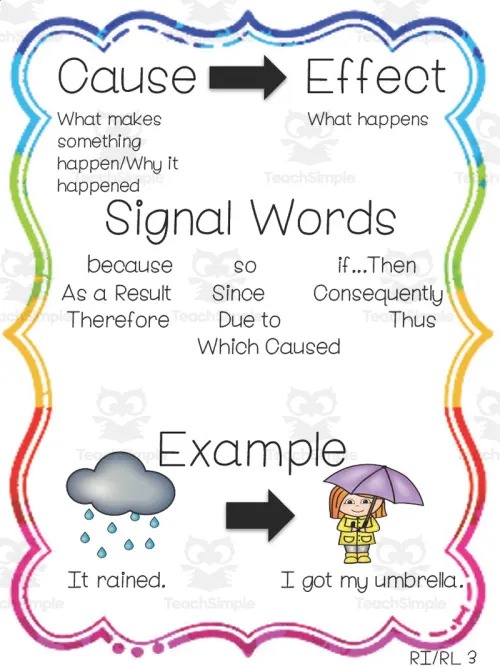
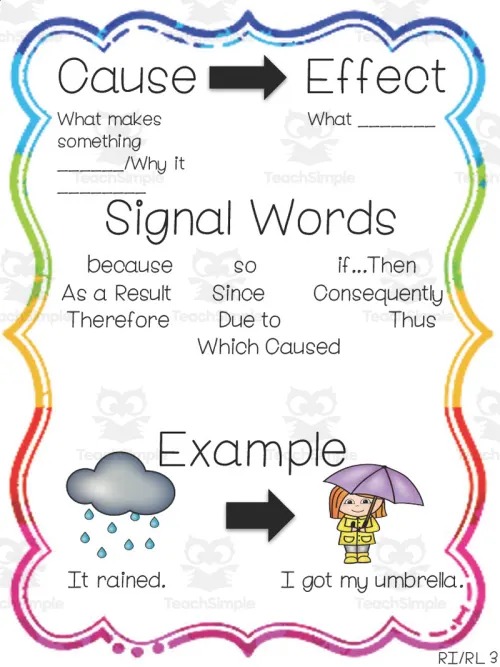
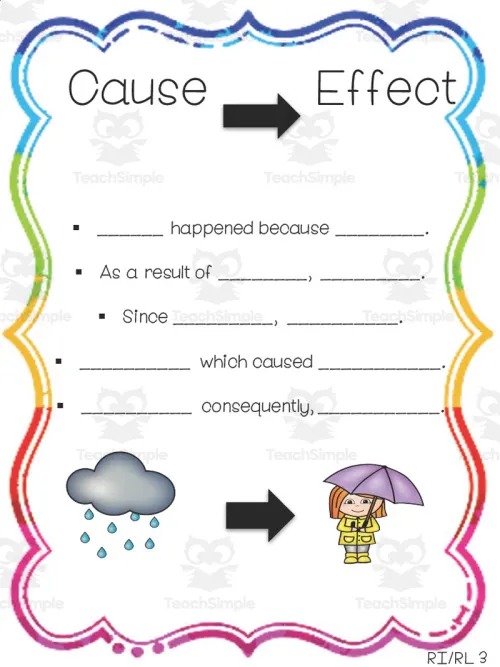
This is a set of three anchor charts for cause and effect. The first anchor chart is complete. The following two charts are fill-in-the-blank. These charts work well displayed on a bulletin board or inserted into students’ interactive reading notebooks.
Cause and Effect | Digital Graphic Organizers by Teach Me This
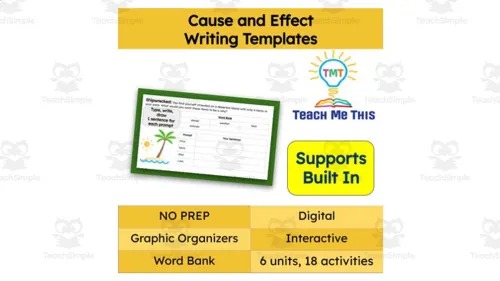
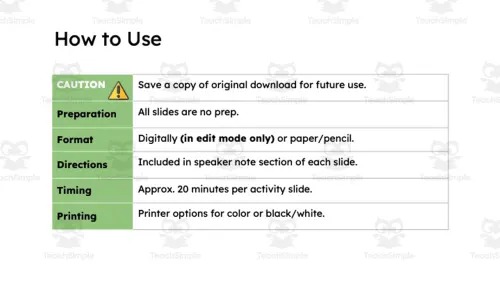
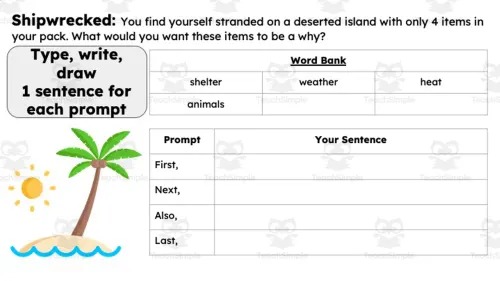
This resource is jam-packed with digital cause-and-effect writing templates that will give your students multiple opportunities to practice this comprehension strategy. There are graphic organizers for each topic.
Cause and Effect Task Cards by Literacy Life
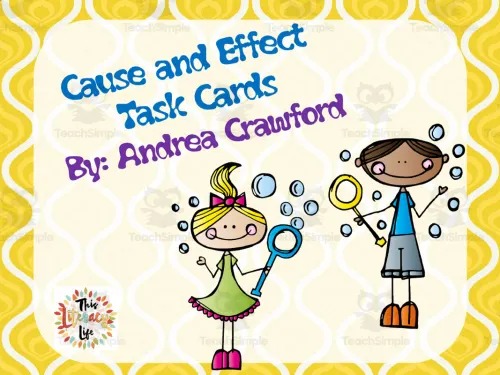
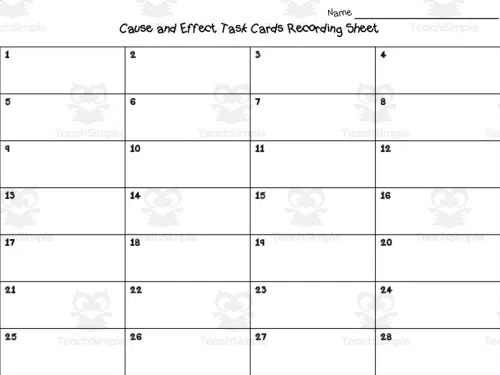
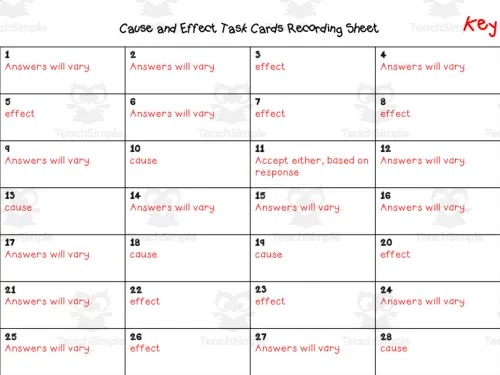
This resource contains a set of cause and effect task cards. These cards are an engaging way to teach and reinforce this reading strategy. There are a total of 28 task cards.
Cause and Effect Concentration Game By Literacy Life
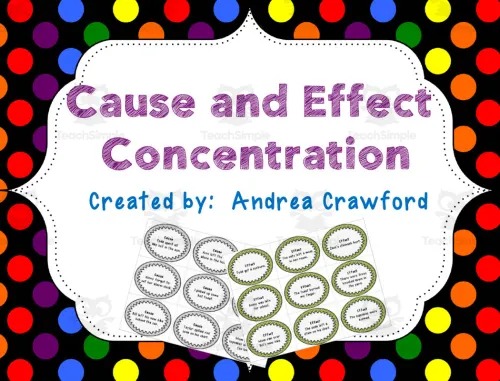
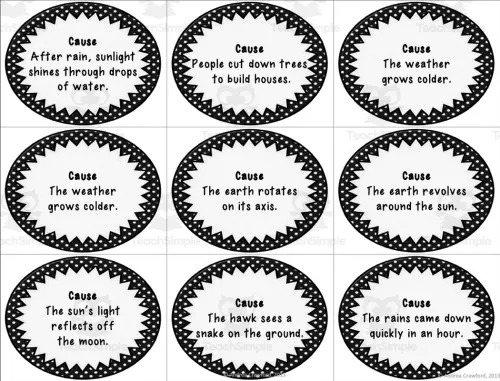
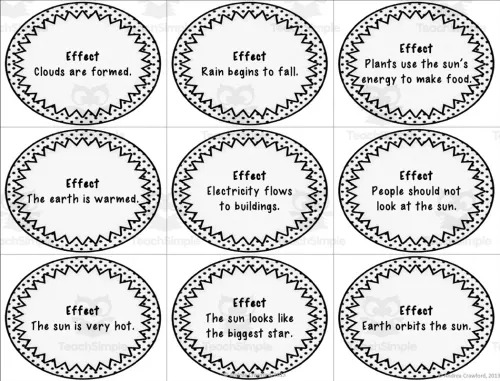
Students will flip over the cards and try to match the causes to the effects. The student with the most matches is the winner.
Cause and Effect Sequencing Activity By Have Fun Teaching
Use words and phrases acquired through conversations and reading to respond to texts.
Cause and Effect Foldable Craftivity By The Language of Learning
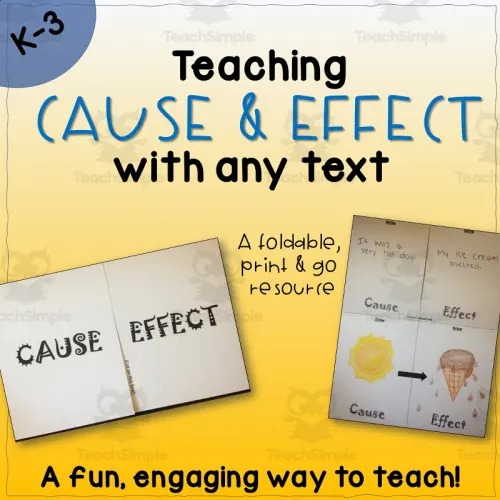
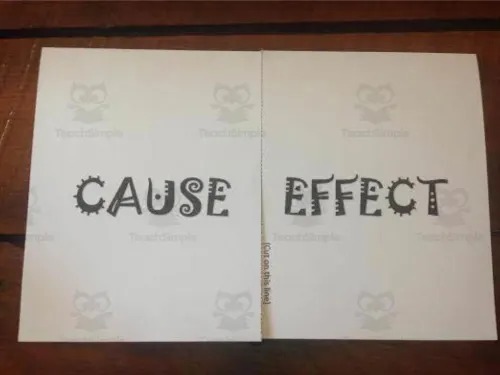
This is a fun and engaging way to teach this reading skill. All you have to do is print and go.
Flashlight Cause and Effect Worksheet by Have Fun Teaching
Another review activity where students identify cause and effect in a text.
Cause and Effect Activities: Grinch vs Santa Claus | Passage with Questions By Rap Opera for Kids!
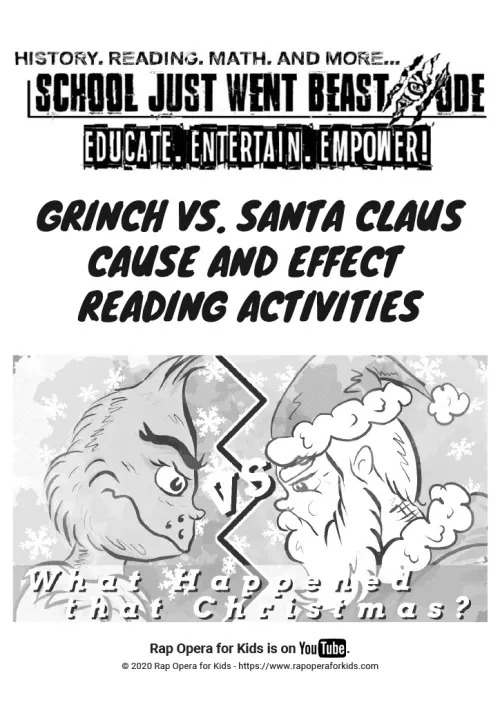
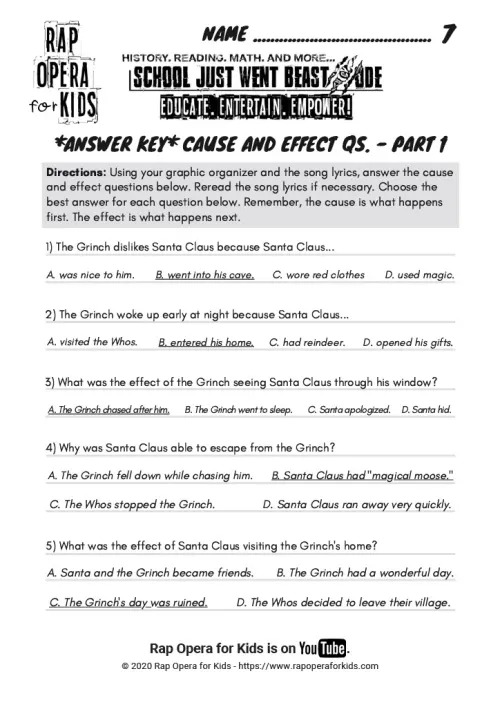
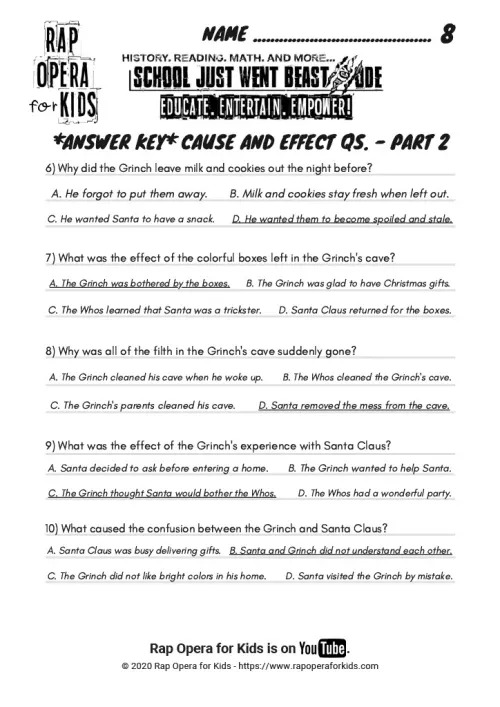
Keep your students’ attention using song lyrics as reading passages while they practice cause and effect. Easily incorporate them into independent activities or complete them together as a class lesson.
Simple Cause and Effect Review Worksheets
These are quick, simple activities to see if your students are grasping the concept.
Find the effect-cause and effect worksheet By Have Fun Teaching
Cause and Effect Graphic Organizer Worksheet By Have Fun Teaching
Eating Healthy Cause and Effect Graphic Organizer By Have Fun Teaching
What Happened Cause Effect Matching Worksheet By Have Fun Teaching
What Happens? Cause and Effect Worksheet By Have Fun Teaching
Identifying Cause and Effect Worksheet By Have Fun Teaching
Other Resources
Cause and Effect Anchor Charts From Teacher Sherpa
Here are some excellent anchor chart resources for your students to practice with and refer back to.
Cause And Effect From Literacy Ideas
Cause and Effect Games From Teaching made Practical
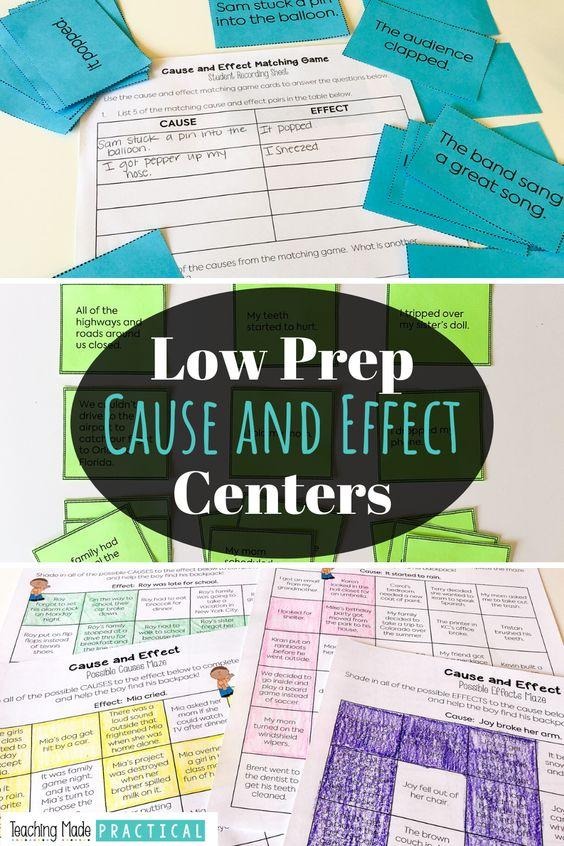
These cause and effect games are low-prep and can be used repeatedly for extra cause and effect practice or review.
Cause and Effect With Alexander and the Terrible, Horrible, No Good, Very Bad Day From owl-Ways Be Inspired
These are great, free cause-and-effect graphic organizers to use with the book “Alexander and the Terrible, Horrible, No Good, Very Bad Day.”
Cause and Effect Photo Scenarios From Speech Time Fun
Students analyze the photos to determine the cause and effect.
Teaching Cause and Effect Activities From The Lemonade Stand Teacher
These cause and effect activities contain anchor charts, posters, worksheets, crafts, activities, and room transformation ideas.
Flow Chart Fables From Snippets By Sarah
Teach the concept of cause and effect with The Three Little Pigs
Summing up
It can’t be denied that teachers work REALLY hard. And only teachers (and maybe their families) realize just how hard. But that’s precisely why teachers believe that sharing is caring and in sticking together. So many excellent resources are available to make life a little easier.
Whether you are teaching cause and effect or any other concept, these charts and resources will inspire you and make your lessons more interactive and engaging for your students.

By Nicola K
Nicola lives in Johannesburg, South Africa. Before starting her career as a writer, she specialized in gifted education and now writes about education and supporting parents and teachers of children who are “different” according to commonly-held views.
